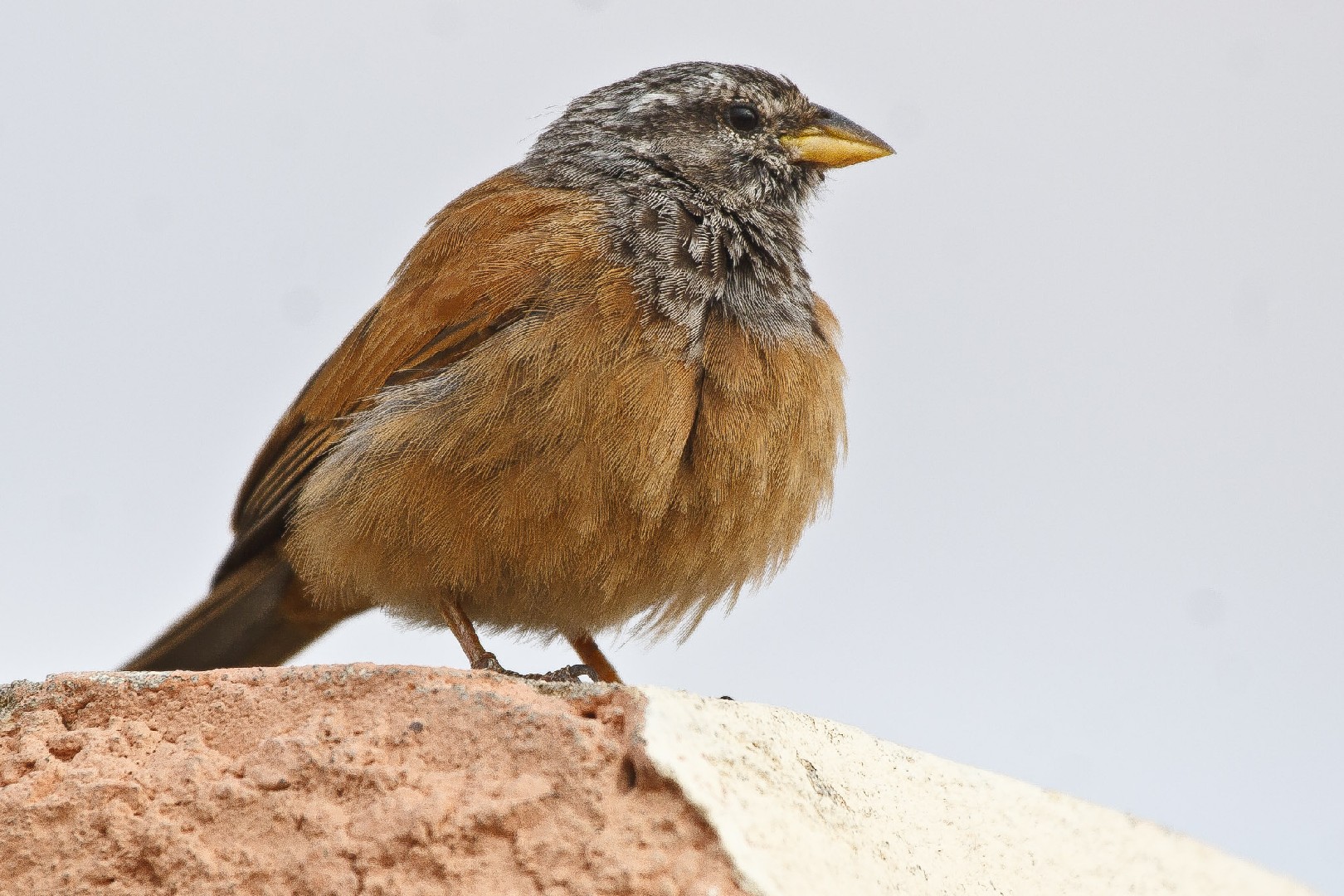House Bunting
A species of Old World Buntings Scientific name : Emberiza sahari Genus : Old World Buntings
House Bunting, A species of Old World Buntings
Botanical name: Emberiza sahari
Genus: Old World Buntings
Content
Description People often ask General Info
Description
The house bunting (Emberiza sahari) is a passerine bird in the bunting family Emberizidae. It is a resident breeder of dry country from northwestern Africa from Morocco south to Mali and east to Chad. In Morocco, the species has expanded from the Atlas Mountains northwards since the 1960s, and has recently reached Tangier and Tétouan on the southern shore of the Strait of Gibraltar. The house bunting breeds around human habitation, laying two to four eggs in a nest in a hole in a wall or building. Its natural food consists seeds, or when feeding young, insects. It is 14 cm long, similar in size to the striolated bunting and smaller than the rock bunting. The breeding male has a sandy orange-brown body and a grey head slightly dark-streaked but without the white supercilium that the striolated bunting has. The female's head has a brown tint to the grey, and more diffused streaking. The house bunting has recently been split from the closely related striolated bunting, of which it used to be treated as a subspecies, Emberiza striolata sahari. The striolated bunting has stronger facial striping and a paler belly than the house bunting. The incubation period of the clutch of three eggs is 12–14 days. The song, given from a perch, is similar to but weaker than that of the common chaffinch. In Morocco, the species is traditionally regarded as sacred, and has become very tame, freely entering and feeding inside houses, shops and mosques. 
Size
14 cm
Colors
Brown
Bronze
Gray
Nest Placement
Ground
Feeding Habits
House Bunting primarily feeds on seeds but switches to insects when feeding its young. This dietary shift showcases its unique adaptation to ensure optimal nutrition for offspring.
Habitat
House Bunting predominantly resides in habitats intertwined with human habitation, such as towns. Favoring buildings and walls for nesting, they also inhabit natural rocky areas and are often found near water sources like wadis. Adaptable to various altitudes, they can live up to 2300 meters high in mountainous landscapes. Their habitat spans arid to semi-arid regions, making them a key species in these ecosystems.
Dite type
Granivorous
People often ask
General Info
Feeding Habits
Bird food type
Species Status
Not globally threatened.
Scientific Classification
Phylum
Chordates Class
Birds Order
Perching birds Family
New world sparrows Genus
Old World Buntings Species
House Bunting 